Searching through light bulb types can be confusing! From lumens to LEDs, filaments to fittings, there are many different characteristics from one light bulb to the next. As LED light bulbs gain popularity and begin to replace incandescent and halogen alternatives on shop shelves, we list here some of the main differing factors between each light bulb type, and why LED bulbs are a great choice.
LED light bulbs might look similar but can have varying results from one product to the next, including warmth, light effect, the strength of illumination and suitability to different light bases – so it’s important to know the characteristics of each product and what the specifications mean before you make a purchase.
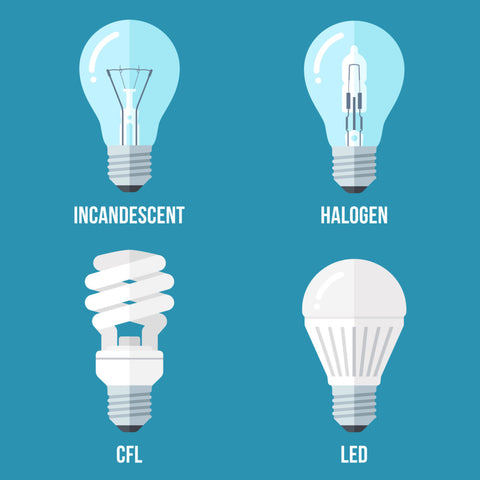
This guide will help explain the differences between each light bulb product, and the pros of switching over to LED light bulbs.
Understanding the Different Light Bulb Types
LED Light Bulbs
LED light bulbs produce light using light-emitting diodes (or LEDs). A newer type of light bulb, and rapidly growing in popularity, these have become more popular due to their incredibly long life span and high-efficiency energy output. LED light bulbs have the best longevity in comparison to other widely available light bulbs; although costly, they can last around 25 years, making them highly economical in the long term.
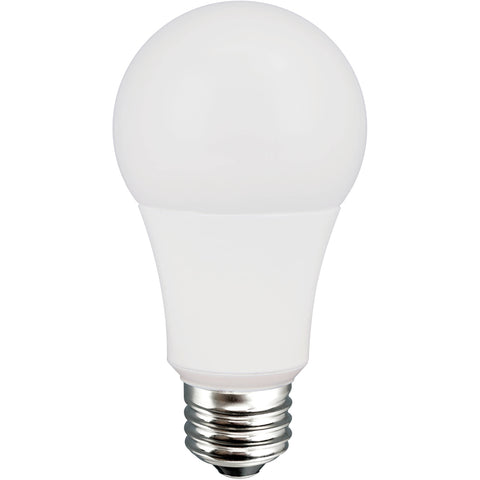
Incandescent Light Bulbs
Incandescent bulbs are an older, traditional light bulb design, which features a short tungsten filament heated within the glass bulb to produce light. This variety of light bulb typically emits a warm glow, with a yellowish brightness.
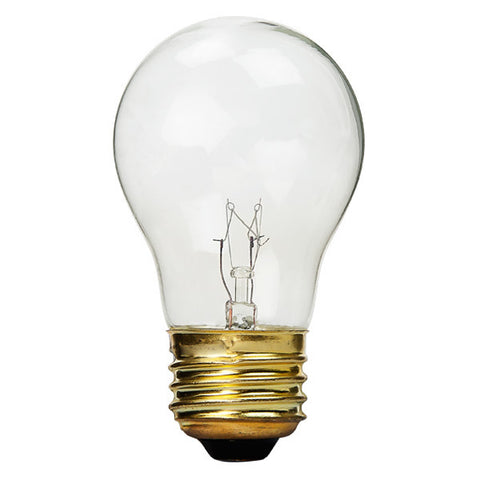
Halogen Light Bulbs
Halogen light bulbs are similar to the original incandescent light bulbs, in that they have a short tungsten filament inside the glass bulb. The only difference between the two types is the way that the glass casing is constructed, and the type of gas used within the heat chamber – incandescent bulbs use nitrogen-argon, whereas halogen bulbs contain halogen gas.
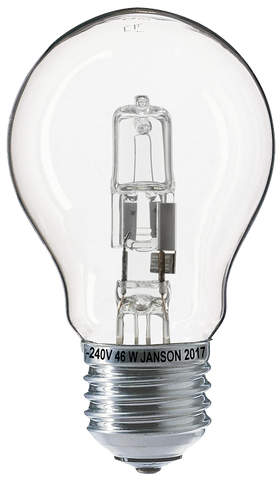
CFL Light Bulbs
A Compact Fluorescent Lamp or CFL, are bulbs with a tube construction that is curved or folded into a light bulb shape. Often used to replace incandescent bulbs, these fluorescent light bulbs are a more energy-efficient alternative than halogen or incandescent light bulbs, using a third of the electricity and lasting around fifteen times longer. One factor to consider with using a bulb such as this is the chemical waste, as these fluorescent light bulbs contain mercury which should be disposed of using specialist hazardous waste disposal.
Check The Packaging
Make sure to check light bulb information on the packaging or website. Store owners and retailers in the United States are required by the U.S Federal Trade Commission to provide clear product details that include energy consumption (measured in watts), brightness (measured in lumens), bulb life (years), color temperature (measured in Kelvins) and mercury content.

Wattage
Instead of focusing on wattage, which measures power or energy use, nowadays, manufacturers are indicating the brightness of their energy efficient bulbs according to lumens, which measure light output. So while we may be used to shopping for bulbs according to wattage, lumens are actually a more accurate measurement of how bright your light will be.
Lumens or Brightness
The measurement of how bright a light bulb will be is determined by a degree of lumens. Essentially, a higher lumen count will mean a brighter light bulb.
As a general rule of thumb, it’s best to opt for bulbs higher than 1000 lumens for light fixtures such as chandeliers or pendant lights that will need to illuminate vast spaces. Light bulbs with a lower lumens count than this are best suited to smaller lamps or wall sconces.
If you are hoping to save energy, it’s advised to find the number of lumens that you need for your lamp or light fitting, and then choose the lowest light bulb wattage. This check will ensure you keep the correct level of brightness for your light, using the most energy efficient bulb.
Light Bulb Color
The level of a light bulb’s brightness is measured by the Kelvin (K) temperature scale. This measurement of color temperature is a useful way to describe the exact tone and color emitted by the light bulb and ranks from 1000K to 10000K – 1000 being the warmest and 10000 the coolest shade.
Commonly, warm light bulbs are best suited to cozy spaces, such as bedrooms, living rooms or hallways, or anywhere that you want to create a warm effect during the evenings and night-time.
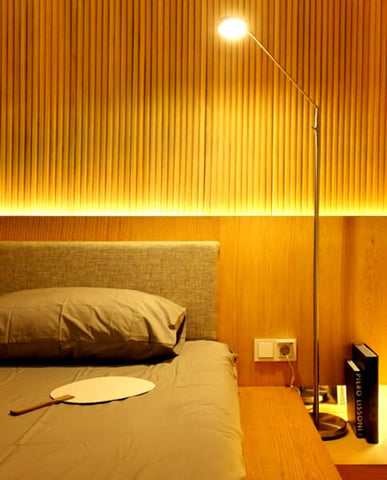
Cool light bulbs are typically found in display areas of shops, garages, bathrooms – places where crisp and clear lighting is required for clarity and everyday tasks.
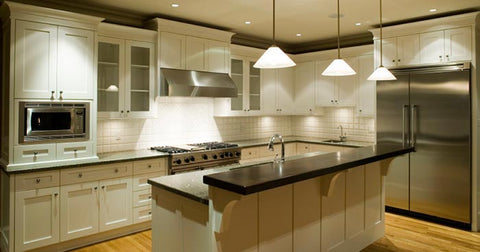
Most light bulbs used in home lighting will fall under around 4100K, as these bulbs emit warmer light, creating an inviting and cozy effect.
As a rule, aim for 2500K to 3500K for bedrooms and living rooms, and between 3500K to 4500K for bathrooms and kitchens.
Why to Choose LED
If you’re deciding between using a more traditional incandescent bulb, CFL, or an LED bulb, bear in mind that LED bulbs possess a much longer lifespan and superior energy efficiency – meaning less environmental impact, but also less of a hit on your energy bill. Considering factors such waste disposal, it’s also worth noting that LED bulbs also do not contain mercury – a poisonous substance (found in CFL bulbs) which is harder to safely dispose of.
US legislation has recently passed which dictates that light bulb producers will be required to manufacture their LED bulbs to run at least 70 percent more efficiently than incandescent bulbs by 2020. Great for your energy bill and another good reason to invest in LED lighting!
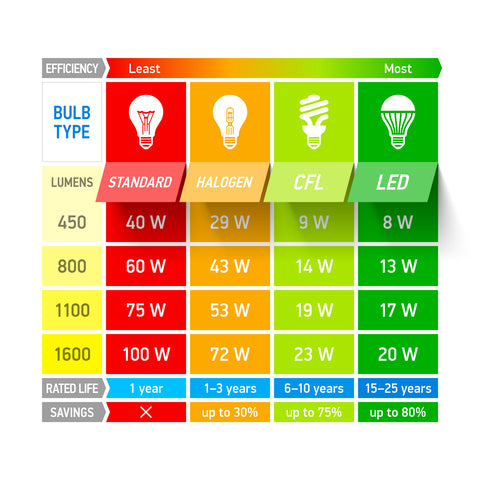
Light Bulbs from Oriental Lamp Shade
We stock a collection of LED light bulbs equivalent from 40W to 100W, to suit a variety of lighting and interior spaces. We also provide over 80 years of in-house lamp experience - making and repairing most lighting fixtures and lamps. We do repair many types of lamps, except halogens that are not from Holtkoetter.
Simply pop into our store in New York to check the LED bulb options we have, or if you have any questions about our lighting, then please get in touch with us by phone or by using the form here.









